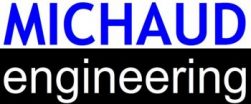Observations From the Field
Robert S. Michaud, P.E.
February 7, 2018
There are a lot of opportunities out there. As business owners and managers it is our business to look for ways to improve the bottom line. We are typically pretty good at what we do, which is why we are in our chosen field. So why do we try to tackle things that we are not good at?
Perhaps your company manufactures widgets. Maybe you are a service business. In either case, your core focus is providing the best product or service that you can for your customers. Yet, to accomplish your goals, you likely have support structures around you to help you reach your goals. Some literal – like the building(s) in which you work, some more metaphorical, like the accountants and lawyers that help you keep your business going in the right direction. If your business is of any real size, you wouldn’t think of trying to perform all of your accounting, and tax preparation yourself. Nor would you engage in significant contractual agreements without the assistance of a good lawyer. So when it comes to managing your physical assets – your buildings and associated equipment, why are you leaving that to chance?
In my travels, I have seen countless facilities that are not properly maintained, operate on a ‘break-fix’ plan (I’ll fix it when it breaks), and have no capital improvement strategy. These organizations fail to see that the revenue they are generating is being wasted, often faster than they realize. To draw an analogy, they are doing great things and filling their buckets with water (revenue), but their buckets are leaking (inefficient operations).
Fewer and fewer organizations staff their own in-house maintenance departments. They have come to the realization that they are not it the maintenance business and have elected to contract the work out to experts in those fields. This is not a bad strategy, but it can still fail if the contractors are not well managed, are not working with a clear scope of work, or are not the best choice for your building needs.
An effective maintenance program begins with a thorough analysis of your assets and equipment. What condition are they in? Will some need to be replaced soon? How much should be budgeted for those capital needs? These questions should be addressed first to establish the larger capital needs. Next, drilling down into the more day to day operations, the maintenance program should be thoroughly reviewed (if it exists) or established from scratch. This usually involves cataloging or asset tagging the equipment. If a Computerized Maintenance Management System (CMMS) is in use, determine if it is still adequate for the current needs.
Whether an existing CMMS or new one is being utilized, the first step is to get the equipment data entered. The next step is critical: the CMMS needs to be populated with the preventive / predictive maintenance tasks that will work for your buildings and your equipment. If this step is not done correctly, the CMMS will not be properly utilized and the maintenance effort will not be effective. It is highly recommended that you work with a professional that is not only experienced in setting up and populating these systems, but that takes the time to understand your specific needs.
Executing the maintenance plan is usually thought of in terms of generating PM work orders, doing the work, and closing them out. This is only part of the equation, however. Obviously, whether you have internal maintenance staff doing the work or you hire it out, you want to make sure the work gets done correctly. Nearly as important is the feedback that comes from the technician that does the work. This information can prove invaluable down the road when decisions need to be made about potential operational problems or the need for equipment replacement. Don’t skimp on capturing their feedback information from their closed work orders.
The final piece is to use this gathered information effectively, and this is where even some of the most tech savvy business fall down. After all the effort of tagging their equipment, creating effective PM plans, hiring skilled tradesmen to perform the work and capturing their comments when closing out the work orders, managers still fail to take advantage or the wealth of information at their fingertips. Work with your consultant and software provider to create meaningful reports that will allow you to effectively manage your assets.
There is a lot of expertise that goes into developing and deploying an effective maintenance program, which is linked to an effective capital forecasting plan … but that is the topic for another day.
If you are feeling that you are not getting the best bang for your buck or that you don’t really have a grasp of what your contractors or technicians are trying to tell you, reach out and hire an experienced building services engineer. Just like a good lawyer or accountant, they are a priceless investment in the future of your business.
